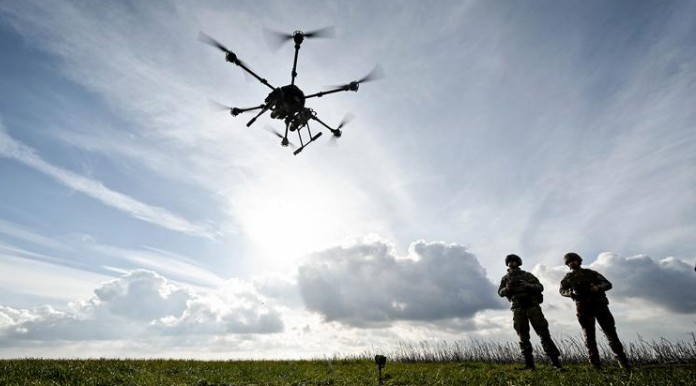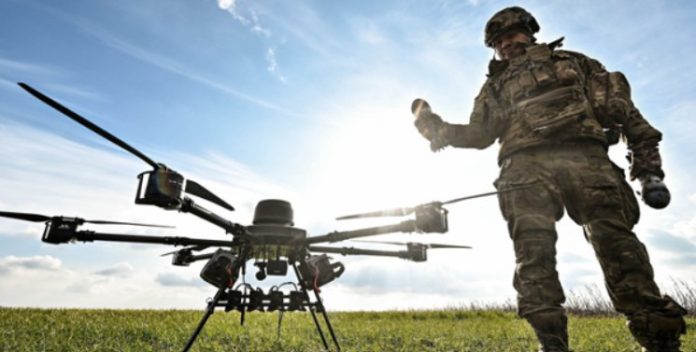In an audacious display of ingenuity and strategic prowess, Ukraine’s security services recently unveiled a complex and meticulously orchestrated operation, codenamed “Spider’s Web,” which unleashed a torrent of devastation upon key Russian airbases deep within its territory. This unprecedented assault, executed on June 1, 2025, marked a dramatic escalation in Kyiv’s asymmetric warfare capabilities, demonstrating an uncanny ability to strike high-value targets previously considered beyond reach and, in doing so, inflicting significant material and psychological damage on Moscow’s long-range aviation fleet.
The operation, which President Volodymyr Zelenskyy personally supervised and described as a “brilliant” achievement, was the culmination of over 18 months of painstaking planning and preparation. It involved a network of small, commercially available First-Person View (FPV) drones, retrofitted with explosives and deployed in a manner that defied conventional military wisdom. Instead of being launched directly from Ukrainian soil, these drones were covertly smuggled into Russia, often concealed within wooden compartments inside civilian-looking cargo trucks. These unwitting civilian drivers, contracted to transport what they believed were ordinary goods, delivered their hidden cargo to pre-designated locations in the vicinity of Russian strategic airbases, sometimes thousands of kilometers from the Ukrainian border. Once in place, the remotely operated compartments on the trucks opened, unleashing swarms of explosive-laden drones that then navigated their way to their targets.
This intricate logistical web, the “Spider’s Web” from which the operation derived its name, allowed Ukraine to bypass Russia’s sophisticated long-range air defense systems, which are primarily designed to intercept larger, faster, and more conventional aerial threats. By launching the drones from within Russian territory, Ukraine effectively exploited the vulnerabilities in perimeter defense, targeting bases that Russia had likely deemed safe due to their vast distance from the front lines. The sheer geographical spread of the attacks underscored the operation’s ambition, with explosions reported across five Russian regions, including Murmansk in the far north, Irkutsk in Eastern Siberia (over 4,300 km from Ukraine), Ivanovo, Ryazan (Dyagilevo), and Amur (Ukrainka). This multi-time-zone coordination highlighted Ukraine’s remarkable organizational and technical capabilities.

The primary targets of Operation Spider’s Web were Russia’s strategic bomber fleet and other high-value military aviation assets. Ukrainian sources, particularly the Security Service of Ukraine (SBU), claimed that the coordinated strikes hit over 40 aircraft, including the formidable Tu-95MS and Tu-22M3 strategic bombers, which Russia frequently uses to launch devastating cruise missile attacks on Ukrainian cities, and even the rare A-50 airborne early warning and control (AEW&C) aircraft. While Moscow confirmed the attacks, it downplayed the extent of the damage, stating that fires were extinguished and casualties avoided in all but two regions, Murmansk and Irkutsk, where some aircraft reportedly caught fire. However, independent open-source intelligence and satellite imagery analysis, along with verified videos circulating online, suggest a more significant impact, with visible damage to aircraft at bases like Olenya (Murmansk) and Belaya (Irkutsk). Some estimates from Ukrainian officials placed the cost of the damage to Russia’s bomber fleet at an staggering seven billion dollars, suggesting that roughly a third of Russia’s strategic cruise missile carriers were impacted.
The strategic ramifications of these attacks are profound. Firstly, they represent a significant blow to Russia’s long-range strike capabilities. Many of the targeted aircraft, such as the Tu-95 and Tu-22M3, are Soviet-era platforms no longer in production, meaning any losses are effectively irreplaceable for Russia’s current industrial base. This long-term degradation of a critical component of Russia’s long-range aviation, which forms part of its nuclear triad, exposes a deep strategic vulnerability. Secondly, the attacks forced Russia to re-evaluate the security of its rear-echelon airbases. Previously, Russia had often relocated strategic bombers to distant bases like Olenya to escape Ukrainian strikes, but Operation Spider’s Web demonstrated that no location within Russia is entirely immune to Kyiv’s reach. This psychological impact on Russian military pride and anxiety cannot be overstated; it fundamentally challenges the assumption of impunity that Moscow once held regarding its territorial depth.
The technological sophistication of Ukraine’s FPV drones, some reportedly costing as little as $500 to $1,200 each, stands in stark contrast to the multi-million-dollar aircraft they targeted. This asymmetric cost-benefit ratio signals a potential paradigm shift in modern warfare, where low-cost, mass-produced unmanned systems can inflict disproportionate strategic damage. Ukrainian intelligence reportedly trained Artificial Intelligence (AI) systems for these drones, using images of Russian bombers from aviation museums, to enable precise targeting of vulnerable components like fuel tanks and weapon pylons, maximizing the destructive effect. Furthermore, the reliance on open-source autopilot frameworks like ArduPilot and remote control via mobile networks demonstrated an innovative use of readily available technology, overcoming challenges of long-distance communication and signal jamming.
The success of Operation Spider’s Web underscores Ukraine’s unwavering resolve and its growing capability to conduct offensive operations deep within Russian territory, even amidst ongoing large-scale ground offensives and relentless Russian bombardments. It sends a clear message that Ukraine will continue to adapt, innovate, and exact a cost from its aggressor, regardless of the perceived limitations of its conventional military might. For Russia, the audacious “Spider’s Web” revealed critical gaps in its layered air defenses and exposed a profound vulnerability in its strategic infrastructure, necessitating a costly re-allocation of resources to protect assets previously considered safe. The global implications are also significant, as military planners worldwide will undoubtedly scrutinize this operation, contemplating the future of asymmetric warfare and the evolving dynamics between drone technology and traditional military power.


